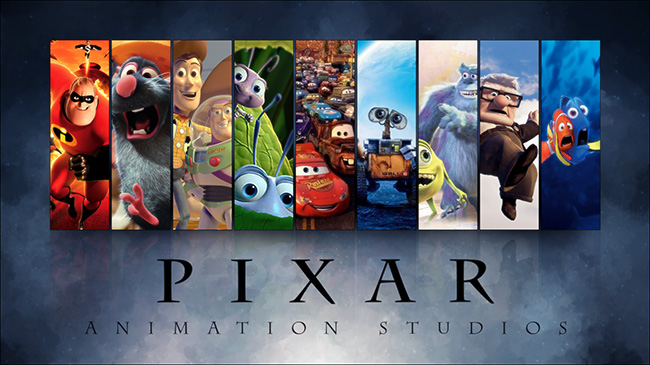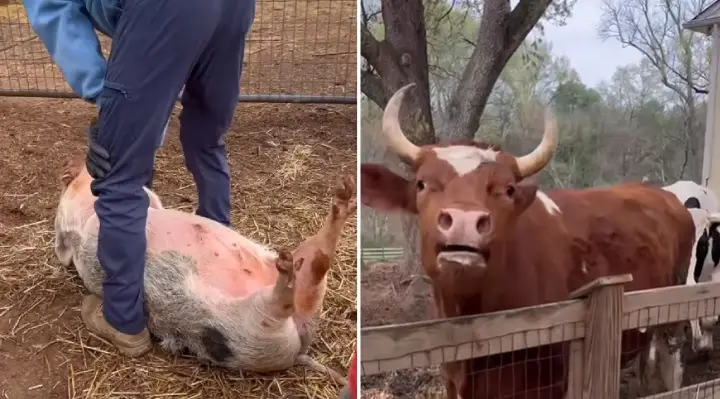The 22 Rules Pixar Follows For Great Storytelling, And What Makes The Movies Relatable To Everyone
May 10, 2016
What makes a movie relatable?
Pixar has mastered the art of storytelling thanks to a list of 22 rules each film must follow.
When people think of animation, they assume the movie is for kids. But that's simply not the case. Pixar films are relatable to everyone, and that's what I'm going to show you.

The 22 Rules:
1. You admire a character for trying more than for their successes.
2. You've got to keep in mind what's interesting to you as an audience, not what's fun to do as a writer. They can be very different.
3. Trying for theme is important, but you won't see what the story is actually about til you're at the end of it. Now rewrite.
4. Once upon a time there was __. Every day, _. One day _. Because of that, _. Because of that, _. Until finally __.
5. Simplify. Focus. Combine characters. Hop over detours. You'll feel like you're losing valuable stuff but it sets you free.
6. What is your character good at, comfortable with? Throw the polar opposite at them. Challenge them. How do they deal?
7. Come up with your ending before you figure out your middle. Seriously. Endings are hard, get yours working up front.
8. Finish your story, let go even if it's not perfect. In an ideal world you have both, but move on. Do better next time.
9. When you're stuck, make a list of what WOULDN'T happen next. Lots of times the material to get you unstuck will show up.
10. Pull apart the stories you like. What you like in them is a part of you; you've got to recognize it before you can use it.
11. Putting it on paper lets you start fixing it. If it stays in your head, a perfect idea, you'll never share it with anyone.
12. Discount the 1st thing that comes to mind. And the 2nd, 3rd, 4th, 5th – get the obvious out of the way. Surprise yourself.
13. Give your characters opinions. Passive/malleable might seem likable to you as you write, but it's poison to the audience.
14. What's the essence of your story? Most economical telling of it? If you know that, you can build out from there.
15. If you were your character, in this situation, how would you feel? Honesty lends credibility to unbelievable situations.
16. What are the stakes? Give us reason to root for the character. What happens if they don't succeed? Stack the odds against.
17. No work is ever wasted. If it's not working, let go and move on - it'll come back around to be useful later.
18. You have to know yourself: the difference between doing your best and fussing. Story is testing, not refining.
19. Coincidences to get characters into trouble are great; coincidences to get them out of it are cheating.
20. Exercise: take the building blocks of a movie you dislike. How d'you rearrange them into what you DO like?
21. You gotta identify with your situation/characters, can't just write 'cool.' What would make YOU act that way?
22. Why must you tell THIS story? What's the belief burning within you that your story feeds off of? That's the heart of it.
And now for a quick, in-depth look at Pixar's approach to storytelling and character development, which explains why their films are relatable to everyone:
(h/t) reddit.
 His Last Day As A Teacher After 36 Years. They Turned It Into A Memory For Life
His Last Day As A Teacher After 36 Years. They Turned It Into A Memory For Life
 Kids Are Loving The Tiny Duck Libraries Popping Up Around New York City
Kids Are Loving The Tiny Duck Libraries Popping Up Around New York City
 A Man Ruined A Beautiful Snowman Display — What Happened Next Was Perfect
A Man Ruined A Beautiful Snowman Display — What Happened Next Was Perfect
 Pet Owners Share Hilarious Stories Of Paying The Vet… Just To Find Out Their Pets Are Weird
Pet Owners Share Hilarious Stories Of Paying The Vet… Just To Find Out Their Pets Are Weird
 Jonathan And Nancy Fell In Love In Real Life — And So Did Their Stunt Doubles
Jonathan And Nancy Fell In Love In Real Life — And So Did Their Stunt Doubles
 Cat Owner Begs Internet For Advice On How To Get Her Cat To Stop Playing Piano
Cat Owner Begs Internet For Advice On How To Get Her Cat To Stop Playing Piano
 Donkey Gets Tricked Into Taking His Medicine — And It’s Adorable
Donkey Gets Tricked Into Taking His Medicine — And It’s Adorable
 I Picked Up My Sister From Work At A Doggy Daycare — Then This Happened
I Picked Up My Sister From Work At A Doggy Daycare — Then This Happened
 Pig’s Friends Couldn’t Handle Seeing Him So Scared
Pig’s Friends Couldn’t Handle Seeing Him So Scared
 Watch A Forensic Scent Dog Track Down A Hidden Pen
Watch A Forensic Scent Dog Track Down A Hidden Pen
 Watch This 4-Year-Old Girl Steal The Show At A Comedy Club
Watch This 4-Year-Old Girl Steal The Show At A Comedy Club
